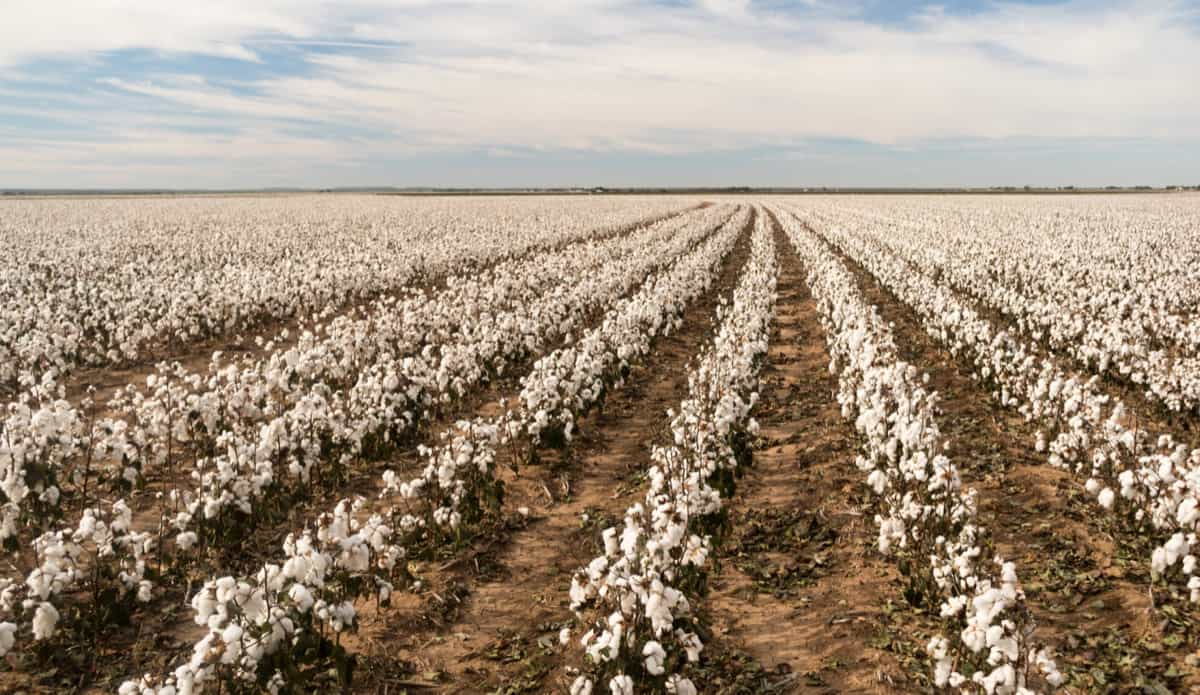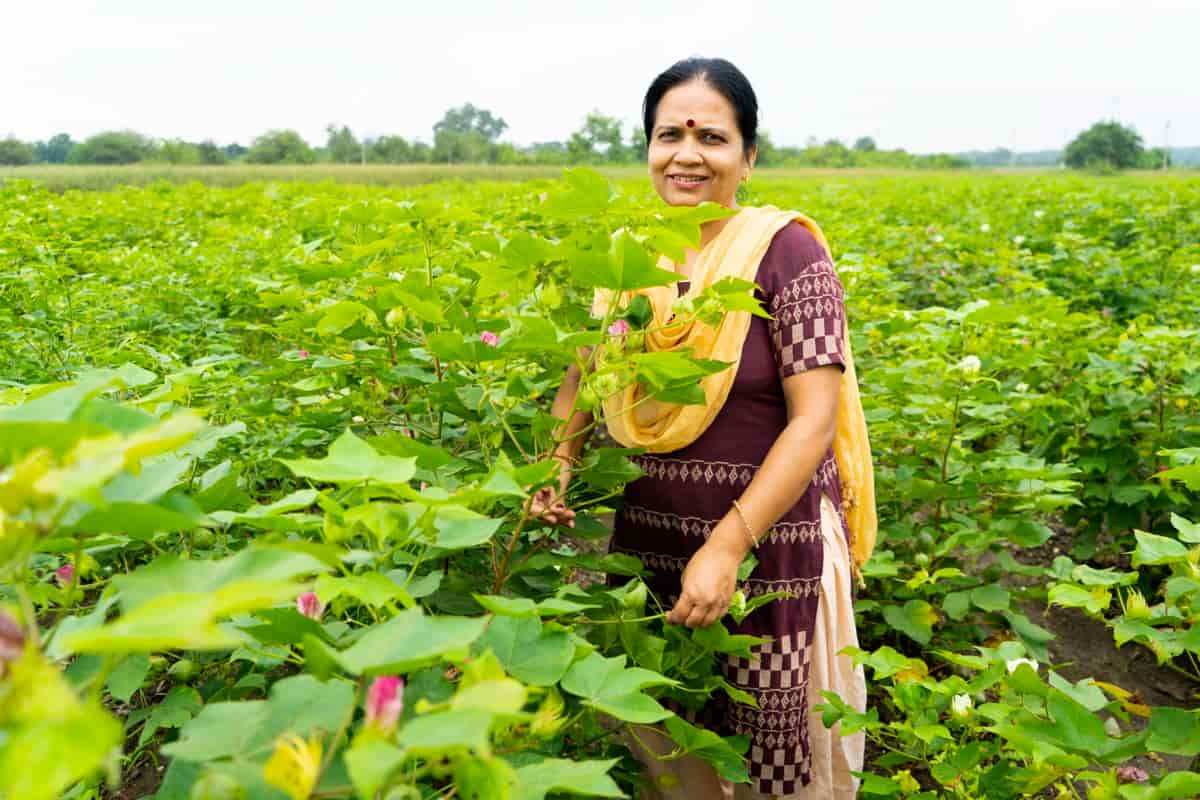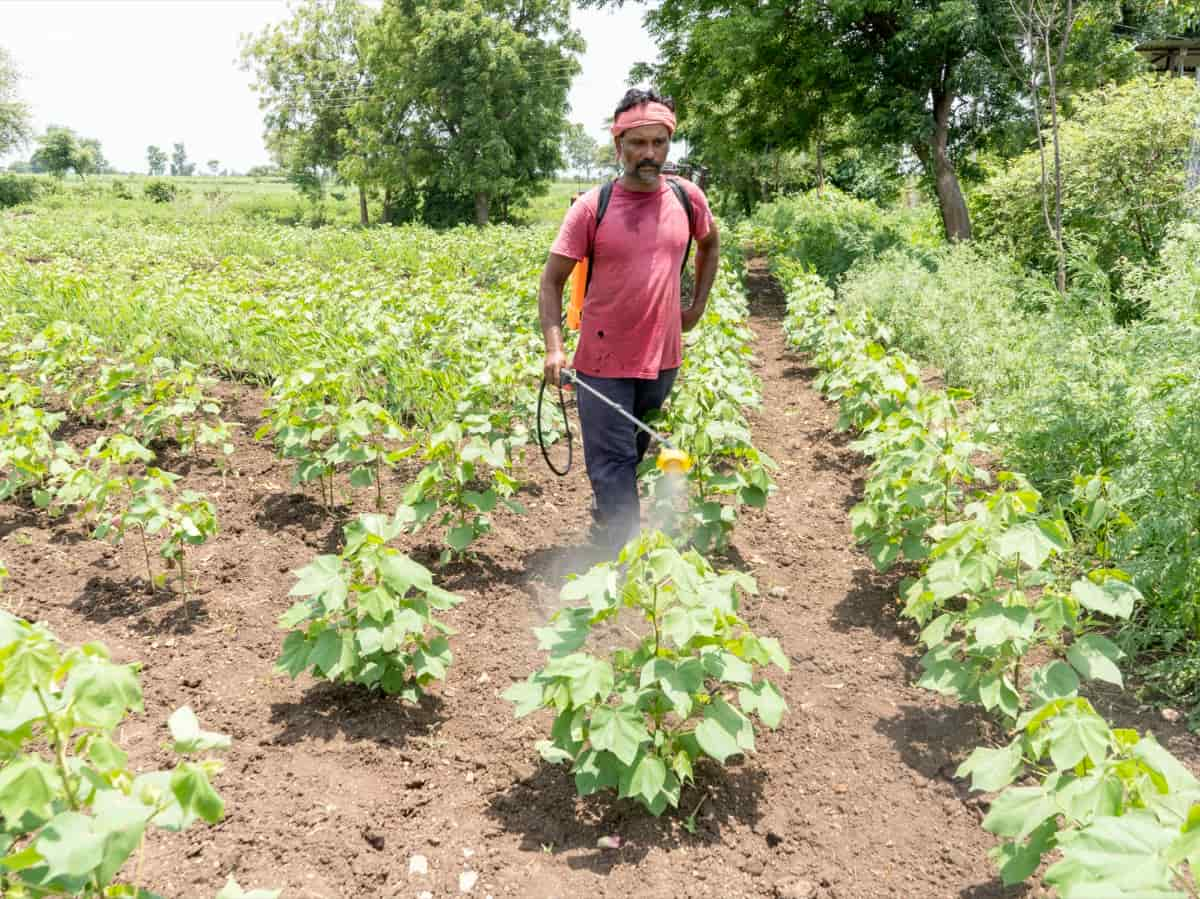The Pink Bollworm (Pectinophora gossypiella) is a destructive pest that attacks cotton plants and causes significant damage to the plant’s fiber and seeds. It is native to Asia but has spread to cotton-growing regions worldwide. In some parts of India, the pest has developed resistance to first-generation transgenic Bt cotton. Infestations are usually controlled through insecticides, plowing the field after harvest, and mating disruption using chemicals and releases of sterile males.

The adult Pink Bollworm is a small, grayish-brown moth, while the larvae are white caterpillars with pink banding. Female moths lay eggs in cotton bolls, and the larvae cause damage by feeding on the seeds. The feeding affects the Cotton’s quality and provides a pathway for other insects and fungi to enter. Bollworms overwinter in the field and re-infest crops the following season, making control measures necessary for successful cotton farming.
Pink Bollworm management in Cotton
The life cycle of Pink Bollworm
The pink bollworm (Pectinophora gossypiella) lays eggs on cotton bolls and young leaves, and the larvae inflict damage by feeding on the seeds. The incubation period is 3-6 days, and the larvae develop pink color by the third instar. The larval cycle lasts 9-14 days in hot regions, and the pupal period is 8-13 days. The life cycle is completed in 3-6 weeks, with overlapping broods in the late season.
Some larvae enter a state of diapause and spin a rigid, spherical cell called a “hibernaculum” to overwinter. The moths have a lifespan of 56 days for females and 20 days for males. The larvae may spin up on bales of lint, seed bags, or cracks and crevices, making them difficult to control.
Favorable conditions favoring an increased population of Pink Bollworms in the field
- Favorable factors dictate the severity of P. gossypiella: maximum temperature over 33°C in the morning, relative humidity less than 70% in the evening, and relative humidity more than 40% during weeks 40, 41, and 43.
- A low temperature of less than 12°C between weeks 48 and 49 is also a condition.
Identification of the Pink Bollworm
- Larva: Young larvae are white, while late instars are virtually black, brown, or green, with multiple dark and light alternating bands running the entire length.
- Adult: Small moth with forewings that are brown or dull yellow-olive grey with black dots. The edges of the hind wings are heavily fringed.
Symptoms of damage by Pink Bollworm
Pink bollworm larvae cause damage to cotton crops by feeding on the seed kernels inside the cotton bolls. This results in rosette flowers plugged holes of entry filled with excreta and “double seeds” formed by cutting window holes between two adjoining seeds. Immature bolls and attacked buds may also drop off, and the lint can become discolored and have burrowed seeds.
These symptoms lead to reduced yield and quality of the cotton crop. Lint staining around feeding regions, resulting in poor quality. Kapas can be found in open bolls. Improper boll opening is visible, as are damaged seeds. Small circular holes may be noticed on the septa between open boll locules. Lint from pink bollworm-infested bolls is of poor quality.
Impact of Pink Bollworm on Cotton crop
Pink bollworm larvae, Pectinophora gossypiella, destroy cotton squares and bolls. Adults are speckled grey to grayish-brown. They have long, thin bodies and reddish, oval wings with thick fringes. Females deposit single eggs in square bracts or green boll calyxes. After 4–5 days, eggs hatch and enter squares or bolls.
In case you missed it: Tobacco Cutworm Management in Cotton: Symptoms, Treatment, Chemical, Biological, Natural, and Organic Control

Young larvae have dark-brown heads and white bodies with extensive transverse pink stripes on the back. They age pinkish. Cracked bolls reveal them feasting. Larvae eat for 10–14 days before pupating in the earth, not the boll. Late-maturing crops are heavily attacked, with 50-75% of open bolls displaying damaged locule (s).
Monitoring Infestation of Pink Bollworm management in Cotton
- ETL: 10% fruiting parts infected
- Gossyplure pheromone baited traps.
- Male moth catches in traps.
- Boll cracking method for destructive sampling
Pink Bollworm management in Cotton by the cultural method
- The host-free period during the off-season
- Cattle grazing of green bolls.
- Timely crop termination
- Clean-up/destruction of cotton stubbles
- Avoid stacking cotton stalks.
- Summer deep plowing
Pink Bollworm management in Cotton by biological method
Always consider an integrated strategy that includes preventative measures and, if possible, biological treatments.
Three weekly releases of the egg parasitoid Trichogramma toideabactrae at the rate of @1,000,000/ha timed to coincide with the pest’s occurrence.
Pink Bollworm management in Cotton by chemical method
Pink bollworm moths can be killed by foliar spraying pesticide formulations containing chlorpyrifos, esfenvalerate, or indoxacarb. Other active ingredients include gamma- and lambda-cyhalothrin, as well as bifenthrin. Spray Carbaryl 5% D dust 20 kg/ha. Using any of the pesticides listed below:
- 2000 ml/ha Phosalone 35%EC
- 2.5l/ha triazophos 40EC
In case you missed it: Fruit Borer (Helicoverpa) Management in Cotton: Symptoms, Treatment, Chemical, Biological, Natural, and Organic Control

The decision of insecticidal spray is based on the male moth catches in the traps. If the moth catches exceed 8 per trap for three consecutive days, the insecticidal spray is necessary. The open bolls on the plants should be harvested before the spray to avoid the resurgence of aphids.
Pink Bollworm management in Cotton by organic/natural method
Use pheromones produced from Pectinophora gossypiella can be sprayed over infected crops. It significantly reduces male worms’ capacity to discover and mate with females. Spraying spinosad or Bacillus thuringiensis formulations at the right time can also be effective. Pheromone traps (8 per acre) can be set 45 days after sowing or at the flowering stage and left in place until the last picking or crop season ends. Trap lures should be changed every 21 days.
Preventive measures for control of Pink Bollworm
- Use fast-maturing cotton varieties.
- Monitor for pest symptoms regularly.
- Use pheromone traps to monitor populations.
- Plan irrigation to reduce populations.
- Use insecticides carefully to avoid affecting predators.
- Harvest early to avoid peak pest populations.
- Destroy plant residues immediately after harvest.
- Leave soil fallow during summer.
- Maintain a 7-month cotton-free period through crop rotation.
Conclusion
Pink Bollworm control in Cotton includes symptom monitoring, the use of pheromone traps, correct watering, the use of pesticides with caution, early harvest, the destruction of plant residues, a summer fallow time, and crop rotation. A mix of cultural, chemical, biological, natural, and organic approaches can be applied for successful control.
- Beneficial Insects in Pest Management
- Natural Solutions for Pest Control in Flower Gardens
- Types of Fungicides Used in Agriculture
- Common Issues in the Fruit Development Stage of Pomegranate Farming
- Fruit Development Issues in Papaya: Easy Solutions and Treatment
- Soil-Borne Diseases and How to Protect Your Plants
- Practices to Prevent Disease Spread in the Garden
- From Wilted to Thriving: How to Treat Root Rot Naturally in Houseplants
- Natural Remedies to Cure Brown Spots on Fig Tree Leaves